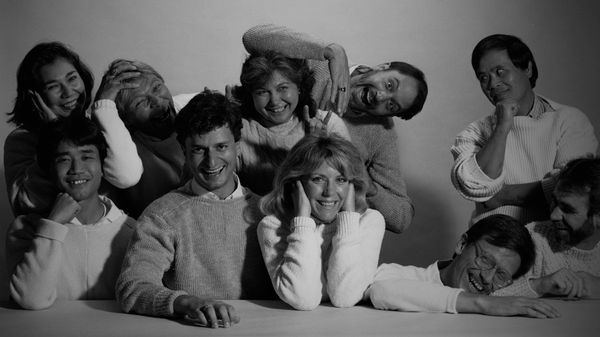Eye For Film >> Movies >> All Man: The International Male Story (2022) Film Review
All Man: The International Male Story
Reviewed by: Amber Wilkinson

While pace can be a good thing for a documentary to have, Bryan Darling and Jesse Finley Reed’s documentary clatters along at such a speed it feels almost as though you are flipping through the pages of their subject, The International Male fashion catalogue, without being permitted to slow down and get a really good look. It’s a shame, given that there is a such a lot here that deserves to be dwelt on a bit more in what is nevertheless an entertaining run over the catalogue’s history. It’s also a pity that they’ve opted for such a conventional style in terms of telling this tale – largely blending talking heads with archive footage – as the catalogue itself was a trailblazer for men’s, and particularly, gay men’s fashion.
Darling and Finley Reed follow its story from the start, taking us into the US Airforce with International Male’s founder Gene Burkard, who like all gay men and women in the military at that time, had to keep his sexual orientation a secret or risk being arrested. Once out of the military he travelled in Europe, drawn to fashion ideas that were a long way from the grey suit and tie uniform that was expected of men in the early Sixties. Amusingly, it was a chemist’s in London that inspired his first item of clothing – a jockstrap-style affair named a “suspensory”, which Burkard adapted into a range of brightly coloured garments referred to as “jock socks”. Despite having no head for business, and hiring a PA, Gloria Tomita, who couldn’t type (although she would go on to be another of the business’ fundamental assets), the underwear was a hit, especially after Burkard decided to get it advertised in Playboy.

This was just the beginning for Burkard, who had a whole range of ideas for fashion that was different from both the dull suited norm and clothing that at that point was targeting the male gay market. “They were ‘gay’. Too much,” Burkard, who was interviewed here before his death in 2020, says, adding he wanted to “butch up” the look. His mail (and, indeed, male)-order catalogue was born, featuring male models – almost all of whom where straight – in high concept settings. So, instead of simply selling a range of underwear or shirts, the pages would offer romantic sounding ideas like “Barcelona man”, “dock work” or “A touch of Milan”. Burkard, who wrote all the advertorial copy as well, was also determined to avoid any words that were even vaguely salacious, such as “hot” and “sexy”, instead selling these fantasies with all most Mills & Boon restraint. This meant that the catalogues achieved a surprising amount of cross-over appeal, with 75 per cent of sales going to women trying to deck out their blokes, although as many of the talking heads note – including the likes of Crazy Ex-Girlfriend’s Parvesh Cheena and Queer Eye For The Straight Guy’s Carson Kressley – for gay kids of the 1970s and 80s, they offered a jazz mag outlet that didn’t even need to be nicked off an older person or parent, because they came in the regular post.
There are a lot of interesting ideas swirling around in this film, not least a core thesis that gay and straight man have “a lot more in common than anybody thinks” because both “fetishize the male body” on some level. That is evidenced by the way that the men in the catalogue were deliberately shot to look ‘traditionally masculine’ even when they were wearing something outrageously flamboyant, which makes for some interesting recollections from the male models from the time. More on the photoshoots themselves would be welcome and talk of the lack of the diversity in the magazine in terms of ethnic heritage is also noted but rather skimmed over. Even during a poignant section concerning the advent of AIDS and the enormous toll it took on the staff of the magazine, it feels as though the directors are unwilling to let the pace drop. I was dying to hear more from the man who ran one of the outlet’s brick and mortar stores and who kept a book with the clothing preferences of 300 customers and to see a bit more of the mechanics of the magazine itself – how pictures were chosen, how they designed it and how on earth they managed to ship it out so successfully as they did. Beyond that, more backroom chat would also be good, the section with the models, for example, could benefit from being given more room to breathe but instead, Darling and Finley Reed are already galloping on to show how shows like Miami Vice and bands like Wham were quickly taking colourful styles that had once only been found in International Male on into the mainstream, with what we now consider “metrosexuality” following close behind. This is never less than entertaining, but it could do with less gloss and more goss.
Reviewed on: 19 Jul 2022















